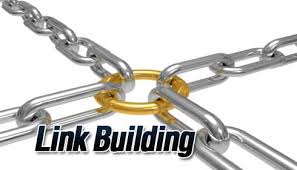Link titles, internal link building and alt text
Link Title provide SEO benefit?
A Link Title attribute looks like this in html code:
Homepage They appear on a link, the same way as an ALT tag does for an image.
Do Link Title’s provide an additional SEO benefit? Will the spider pick up the added keywords?
Typically you would use the title attribute on a link when the anchor text of the link does not p roperly describe the resource. In theory, this shouldn’t happen as your anchor text should be very descriptive of the linked resource, enough so that the user would not need a visual clue like that provided by the title attribute.
Some SEO’s use them, and others say they’re useless. There really is no way without one of the reps saying its true to say if the engines ignore them. Just because the information is not shown in the index, does not mean the engines aren’t using them. I’ve been using them for the last few years, and have very good results. My results may be becuase of everything else I do, but either way it’s not hurting rankings. So worse case is its not effecting it, best case is, it’s helping.
Internal Links
Internal Links are hyperlinks that point at (target) the same domain as the domain that the link exists on (source). In layman’s terms, an internal link is one that points to another page on the same website.
Code Sample
<a href=”http://www.same-domain.com/” title=”Keyword Text”>Keyword Text</a>
What is an Internal Link?
Internal links are links that go from one page on a domain to a different page on the same domain. They are commonly used in main navigation.
These type of links are useful for three reasons:
• They allow users to navigate a website.
• They help establish information hierarchy for the given website.
• They help spread link juice (ranking power) around websites.
Internal Link Building
Now, I will discuss the simplest on-page SEO strategy available: internal link building. You begin by establishing an overall theme or topic for your website and subsequently identifying the primary keywords for every page and article that you have created. I recommend sifting through your website, finding those keywords and phrases within the content on each page, and then converting those keywords and phrases into hyperlinked text, which will direct traffic to the most relevant webpage. Consider that each internal link you have and how many times a page on your website links to the keyword affects the “vote” for the webpage. So, do not just link everything to everything. Have a solid strategy that everyone in your organization can refer to.
Notice the first paragraph in this article. It has what is called an “in-content anchored text link,” which links to another post on our website. Not only does this introduce why the article was written; it also has all the same benefits as the “related articles” or posts feature at end of your webpages, which include:
You entice your visitors to look at other pages on your website.
This will trigger search bots to visit these pages as well.
Your internal link building for the page will be enhanced.
What is Alt Text
Alt text is a shortened term that stands for alternative text or alt attribute. The alt text is used in HTML and XHTML documents to specify text for an image on a web page in the event that images are turned off on a visitor’s web browser. This text description provided by alt text is generally visible when a visitor “hovers” or holds their cursor over the place where the picture should be. Then a small box with the alt text will appear so that the visitor to the website can read a description of the picture. This tag is also very important for Internet use by the visually impaired, because it allows special software to read the alt text out loud for these types of users.
There are other reasons that alt text is used on websites as well. At first, alt text was used because there were many people using text-only systems such as Linux. While the original reason for alt text is no longer applicable, there are other reasons that this is utilized.
Search engine optimization: Most search engines use alt text to determine the meaning of objects like pictures
Handheld devices: People using handheld devices can take advantage of Internet usage by not waiting for large pictures to load
Low bandwidth: Visitors with low bandwidth can opt to not load graphics and just read the alt text
Utilizing alt text is an excellent search engine optimization technique as well.
Apply for SEO Certification Now!!
http://www.vskills.in/certification/Certified-SEO-Professional




